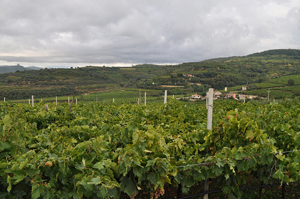Three Italian Winemakers
This story originally appeared in the Napa Valley Register.
Italy is made up of 20 regions, each of which produce wine. Three of the most well-known regions are Piemonte, Tuscany and Veneto and within these regions are the famous areas of Soave, Barolo and Tuscany.
When I was invited to lunch to meet three winemakers from these regions, I could not think of a better trio of wines to take us through a meal — from the crisp whites of Soave, to the earthy elegant wines of Barolo to the bold fruity wines of Tuscany.
And while these three regions are independent, as are the winemakers who were in town, what they share is a connection to history, a passion for flavor and a story to tell.


27 April, 2017




